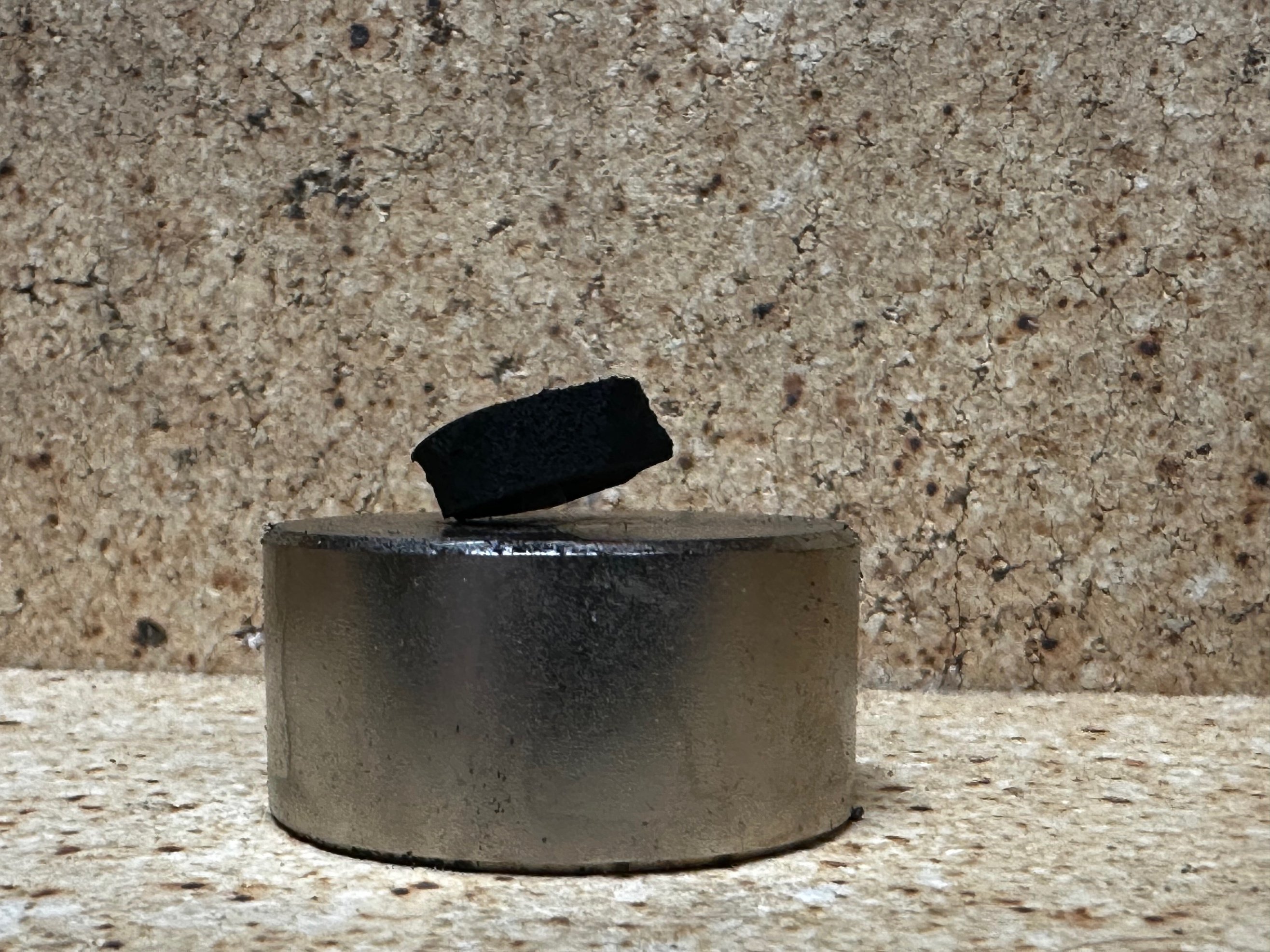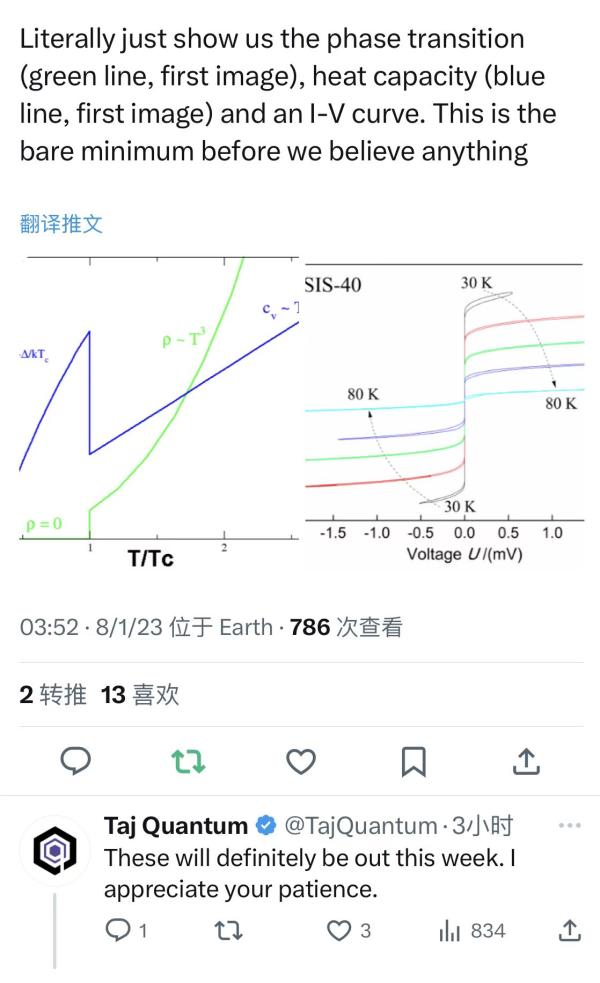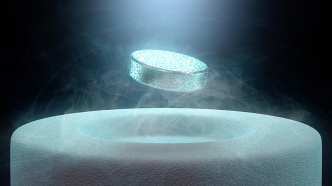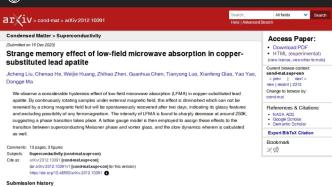

Teji Quantum Corporation of the United States, which intends to compete with related Korean research teams for the "No. 1" room-temperature superconducting material, released a photo saying that it has newly discovered a room-temperature superconducting material, which is a graphene foam material and is very fragile.
In the early hours of August 1st, Beijing time, Taj Quantum, an American company that wanted to compete with related Korean research teams for the " No. The company press release, like squeezing toothpaste, released a little new information: a photo, the "protagonist" is a black sample block that is suspected to be suspended on a magnet. But unsatisfactorily, they did not publish any experimental data, especially those related to magnetization, resistance, etc.
"This unique Type II superconductor (patent number: 17249094) operates over a wide temperature range, including temperatures well above room temperature, from approximately -100° F (-73° C) to about 302° F (150° C) -- a property that is not commonly seen in the world of superconductors."
In the aforementioned information, the company's CEO Paul Lilly said, "Our main goal is to accurately target applications that can quickly benefit everyone by providing the fastest time-to-market capabilities." “We are working with our attorneys to develop a way to open source our technology for universities and nonprofits while retaining the rights associated with monetizing derivative technologies without burdening those technologies.”
To put it simply, the aforementioned superconductor invented by them is a kind of "oiled" graphene: "perforate" the graphene, and then "oil" one side or "oil" both sides.
According to previous reports from The Paper, Teji Quantum’s patent document on July 25 states, “The present invention provides a type II superconductor, including the use of aliphatic hydrocarbons or other suitable activation materials on at least one surface (that is, in its structure Non-polar liquids that do not contain π bonds, such as vacuum pump oil, silicone oil composed of methyl silicone, or perforated graphene wetted by aliphatic hydrocarbon chains with one end of the chain containing reactive functional groups bonded to the substrate). The invented superconductor maintains superconductivity at a temperature much higher than room temperature (that is, the critical temperature), does not need to be kept at a low temperature, and can work under a strong magnetic field." "The method of manufacturing a superconductor is to punch holes in the carbonaceous material to create voids , and at least one surface of the carbonaceous material is coated with an activation material."
The company tweeted on the morning of July 30, “We are pleased to announce that we have finally been granted a patent for a superconductor of the second type (Type II) above room temperature. Contrary to some recent paper reports circulating from Korea. Simply writing 'world's first' in the title of a paper does not mean you are the world's number one. After more than two years of waiting, our patent was granted last week. Read it from the United States Patent and Trademark Office (USPTO) website Our Patent: …”

Taiji Quantum Company stated that more information about superconductors will be released in the future.

Netizens questioned that Taiji Quantum Company did not publish the basic experimental data of its "superconductor".
Some netizens commented, "Just show us the phase transition, heat capacity and IV curve. This is the minimum requirement before we believe anything." "If you have these pictures, why don't you send them out?"
In response, Taiji Quantum said that it hopes people will wait, "These will definitely be released this week." "This is a marathon." "In the next few days and weeks, we will be here ( Twitter) and our website. All information posted requires interpretation and approval to ensure we do not publish too much information too quickly. We do not wish to post any information that is not factual, or that may be taken out of context information."
Taiji Quantum said that as a supplier, it focuses on blockchain-based authentication systems and encrypted communications, and has won related business contracts.
Room temperature superconducting materials, especially materials that can enter the superconducting state at "room temperature + normal pressure", are materials that people dream of obtaining, and disturbances follow. According to previous reports by The Paper, on March 8, in an academic report of the American Physical Society held in Las Vegas, Las Vegas, USA, Professor Ranga Dias of the University of Rochester announced that he had invented A material that can superconduct at room temperature at 21°C, but it needs to be pressurized to 10,000 standard atmospheres. Diashai published relevant experimental data in the report, which aroused widespread concern.
But only about a week later, the team led by Wen Haihu, a professor at the School of Physics of Nanjing University, announced the results of repeated experiments, overturning the research results of room temperature superconductivity by Dias and others. Related papers were subsequently published in the international academic journal Nature.
On the morning of July 22, the relevant research team of the Korea Quantum Energy Research Center published two similar papers on the preprint website, claiming that a copper-doped lead apatite material named LK-99 has "room temperature + normal temperature". It is the world's first room temperature and atmospheric pressure superconducting material. However, its currently published experimental data has been questioned and is considered insufficient to prove the LK-99 superconductor. At present, many international research teams are trying to synthesize LK-99 and verify its experimental results.


